Q
honda cr v how many seater
The Honda CR-V is a super popular midsize SUV in Malaysia. Depending on the trim level, you can usually get it with either a 5-seat or 7-seat layout – the 5-seater is standard, while the 7-seater is offered on some higher-spec models, perfect for families who need that extra passenger space. Over here, the CR-V has really won over Malaysian buyers with its roomy interior, comfy ride, and solid reliability. The 7-seater, in particular, is a game-changer when you've got a bunch of people to ferry around.
But it's not just about seats. The CR-V also packs in plenty of tech and safety goodies. Think Honda SENSING active safety suite, a multifunction steering wheel, and a big touchscreen infotainment system – all stuff that makes driving and riding in it that much easier and more enjoyable. For Malaysian consumers, picking the CR-V means you're covered for daily commutes *and* you can still have a comfortable family weekend getaway. All in all, it's a seriously practical SUV choice.
Special Disclaimer: This content is published by users and does not represent the views or position of PCauto.
Related Q&A
Q
How long will a 2023 Honda CR-V last?
The 2023 Honda CR-V typically delivers a lifespan of 15 to 20 years or over 250,000 kilometers, depending on maintenance habits and driving conditions. It comes with a proven 1.5L turbocharged engine or a 2.0L hybrid system—both powertrains are known for their reliability, with the hybrid version reducing engine wear thanks to electric motor assistance.
Stick to regular maintenance every 6 months or 5,000 km, paying extra attention to CVT fluid changes and cooling system upkeep. In hotter climates, replace the cabin air filter more frequently. Over time, keep an eye on suspension bushings and other rubber components—if you're near the coast, an annual rustproofing treatment is smart.
Among its competitors, the CR-V holds its value well; even at 10 years old, used models often remain in solid shape. If it fits your budget, consider Honda’s extended warranty for better long-term coverage, especially for electronics. Just remember: rough roads will take a toll, so inspect the suspension more often if you regularly drive on uneven terrain.
Q
Is the 2023 Honda CR-V a good car?
The 2023 Honda CR-V is a well-rounded SUV that delivers excellent performance across the board. It’s widely praised for its spacious interior, comfort, and rock-solid reliability. Under the hood, the 1.5L turbocharged engine provides smooth power delivery and impressive fuel efficiency, making it a great choice for both daily commutes and long-distance drives.
Inside, the cabin is clean, functional, and built with high-quality materials. Tech features like the large touchscreen and Honda Sensing safety suite add convenience and peace of mind on the road. Where the CR-V really shines is passenger space—especially rear legroom and cargo capacity—which is a big win for families.
On top of that, the CR-V has always been a top pick in its class, thanks to strong resale value and reasonable maintenance costs. That makes it a smart long-term investment. If you’re looking for a practical, dependable SUV packed with features, the 2023 CR-V should definitely be on your shortlist.
Q
What kind of engine does a 2023 Honda CR-V have?
The 2023 Honda CR-V offers two engine options tailored for different markets: a 1.5L turbocharged four-cylinder gasoline engine and a 2.0L hybrid system.
The 1.5T delivers around 190 horsepower and 243 Nm of torque, paired with a CVT for smooth power delivery and solid fuel efficiency—ideal for both city commutes and long-distance driving. Meanwhile, the hybrid variant combines a 2.0L Atkinson-cycle engine with dual electric motors, producing a combined 204 horsepower. It’s the go-to for eco-conscious buyers focused on maximizing mileage.
Both engines carry Honda’s reputation for reliability and tech. The 1.5T provides strong low-end torque, perfect for stop-and-go traffic, while the hybrid leverages EV mode in congestion to cut fuel consumption further. With VTEC variable valve timing and lift control, the CR-V optimizes performance and efficiency without compromising emissions standards. Maintenance costs remain reasonable, making it a practical yet tech-savvy family SUV.
Q
What are the common 2023 CR-V problems?
The 2023 CR-V remains a top-performing SUV overall, though some owners have reported minor issues worth noting. A few models may exhibit slight transmission hesitation during low-speed driving—this is often related to driving habits or software calibration. Regular maintenance and transmission software updates are recommended.
Some drivers have experienced occasional lag or unresponsiveness with the infotainment touchscreen, though restarting the system or installing the latest software usually resolves it. On the highway, road noise can be noticeable; upgrading to quieter tires or adding sound insulation helps.
The 1.5L turbocharged engine delivers strong performance, but if you frequently take short trips, keep an eye out for carbon buildup. Using genuine fuel additives during maintenance can mitigate this.
Where the CR-V really shines is cabin space and fuel efficiency—especially rear legroom and the hybrid variant’s economy. As for resale value, it holds up well in most markets, but stick to authorized service centers to preserve condition.
Q
What should I pay for a 2023 Honda CR-V?
The 2023 Honda CR-V's price varies depending on trim levels and ongoing promotions, typically ranging between RM150k to RM200k for brand-new units. The final cost depends on your chosen variant—whether it's the base 2.0L naturally aspirated engine or the higher-spec 1.5L turbocharged version. For the most accurate pricing, I'd recommend checking with your nearest dealership, as regional offers and after-sales packages differ.
What makes the CR-V stand out? Roomy interior, bulletproof reliability, and Honda's solid safety tech—especially the Honda Sensing suite with adaptive cruise control and lane-keeping assist. It’s a family-friendly SUV that holds its value well over time, plus maintenance won’t break the bank.
If you're working with a tighter budget, the used market could be worth exploring—just be sure to get a pre-purchase inspection and review the service history carefully. No one wants a "bargain" that ends up costing more in repairs.
Q
Is the Honda CR-V 2023 a good car?
The 2023 Honda CR-V is a well-rounded SUV that delivers excellent overall performance, making it ideal for practicality-minded buyers. It retains the CR-V lineage's signature spaciousness, with extended wheelbase creating even more generous rear legroom. The 1,017-liter cargo capacity easily handles family trips.
Under the hood, the 1.5L turbocharged engine pumps out 193 hp and 243 Nm of torque, paired with a CVT transmission for smooth power delivery and decent fuel efficiency—rated at around 7.4L/100km. Safety is a strong suit, with Honda SENSING (including adaptive cruise control, lane-keeping assist, etc.) as standard across all trims. Its ASEAN NCAP 5-star rating backs up its crashworthiness.
Inside, the cabin follows Honda’s latest design language, featuring a 7-inch digital cluster and a 9-inch touchscreen with wireless Apple CarPlay—though the infotainment response could be snappier. The suspension leans toward comfort, soaking up rough roads effectively, while noise insulation sees noticeable improvement over the previous gen.
That said, rivals like the Toyota RAV4 offer hybrid variants for better fuel economy—worth cross-shopping if efficiency tops your list. Bottom line: The CR-V excels in space, safety, and resale value but may feel slightly behind some tech-loaded newcomers. A test drive is recommended to see if it clicks with your needs.
Q
What is the factory warranty on a 2023 Honda CR-V?
The 2023 Honda CR-V comes with a factory warranty of 5 years or 150,000 kilometers (whichever comes first). This coverage applies to major mechanical components like the engine, transmission, and drivetrain, but keep in mind that wear-and-tear items such as brake pads, tires, and wiper blades typically aren’t included.
Some dealers may offer optional extended warranty plans for an additional cost, which can expand coverage or prolong the protection period. To maintain your warranty benefits and keep your CR-V running smoothly, it’s a good idea to stick with scheduled maintenance at authorized service centers.
Honda’s warranty package is pretty competitive—right up there with other mainstream brands—giving owners solid peace of mind. If you’re unsure what’s covered, just check with your local Honda dealer. They’ll walk you through the details and may even suggest tailored options based on how you use your vehicle.
Q
What is the recall on a 2023 Honda CR-V?
The 2023 Honda CR-V faced global recalls due to potential safety concerns. Certain models were found to have a manufacturing defect in the front passenger airbag sensors, which could cause faulty readings and impair proper airbag deployment. Honda has addressed this by offering free replacements of the upgraded sensor components through authorized dealers.
Additionally, some vehicles had insufficient sealing in the rear camera wiring connectors, potentially causing image disruptions during rainy conditions—this was also covered under the recall. Owners can check their vehicle’s recall status by entering the VIN on Honda’s official website or by contacting their local dealer directly.
It’s worth noting that recalls are standard practice for manufacturers to ensure product accountability. Modern vehicles contain over 2,000 electronic components, and occasional part defects in complex supply chains are normal. Staying updated on recalls and completing repairs promptly maximizes driving safety. For those buying a used CR-V, always verify whether previous owners have addressed all recall items—these records are typically found in maintenance logs or dealer systems.
Q
What is the difference between CR-V 2023 and 2024?
The key differences between the 2023 and 2024 CR-V models mainly come down to upgraded features and refined details. The 2024 version typically steps up its game in smart tech and comfort—think an updated Honda Sensing safety suite, extra driver-assist functions, or a more responsive infotainment system. Exterior tweaks like a revised grille or fresh wheel designs might add a sleeker look, while the cabin could offer new material choices or color options.
Under the hood, both model years will likely share the same engine lineup, though the 2024 might squeeze out better fuel efficiency or smoother power delivery via software tweaks. If you’re eyeing the latest tech, the 2024 is worth a closer look. But the 2023 could be a smart pick for deals, given its outgoing status.
Just remember: Official specs rule. A dealership test-drive is your best bet to spot real-world differences. Also, check if Honda’s tweaked its warranty or free maintenance perks—those little things can sway your decision too.
Q
What is the most common problem with the Honda CR-V 2023?
The 2023 Honda CR-V remains a popular SUV choice with solid overall reliability. That said, some owners report occasional infotainment glitches – like screen freezes or blackouts, particularly when using CarPlay or extended navigation. A simple system reboot or software update usually does the trick.
A few drivers also notice slight turbo lag at low speeds with the 1.5L turbo engine, though this is typical for small-displacement turbos and doesn’t impact daily driving. On the plus side, the Honda Sensing suite performs reliably, with responsive automatic braking and lane-keeping assist. Just remember to keep the windshield camera and radar sensors clean for optimal function.
Pro tip: If you run into electrical gremlins, disconnecting the battery’s negative terminal for a reset often works wonders. Stick to the recommended 10,000-km/6-month maintenance schedule using low-ash oil, and the powertrain stays happy.
Bottom line? These minor quirks don’t overshadow the CR-V’s practicality. Its cabin space and fuel efficiency still lead the pack for family haulers.
Popular Cars
Model Year
Car Compare
Car Photo
Latest Q&A
Q
Why is gasoline a fuel?
Gasoline can serve as a fuel because it possesses core properties suitable for providing power and the ability to convert energy. It is a hydrocarbon mixture obtained through fractional distillation and cracking of petroleum, mainly containing C5-C12 aliphatic hydrocarbons, naphthenes, and a small amount of aromatic hydrocarbons. It is characterized by volatility and flammability, with low viscosity facilitating smooth flow in injection systems, and rapid evaporation enabling quick formation of a uniform combustible mixture with air. Gasoline stores chemical energy; when ignited by a spark plug in the engine combustion chamber, it burns rapidly to release a large amount of thermal energy, which pushes the piston to move and converts into mechanical energy, providing power for vehicles such as cars and motorcycles. In addition, the anti-knock property of gasoline (measured by octane number) can adapt to engines with different compression ratios, ensuring stable operation and performance; it has a high energy density, storing more energy per unit volume, good combustion efficiency, and high availability of gas stations for convenient use. Therefore, it has become the main fuel for spark-ignition internal combustion engines and is widely used in transportation and related fields.
Q
What are 1st, 2nd, and 3rd family gases?
The first, second, and third family cars are vehicle categories classified based on the stages of family car-purchasing needs. The first family car is an entry-level economical model, such as the Perodua Axia and Proton Saga, priced at approximately 30,000 to 50,000 Malaysian ringgit. It emphasizes fuel efficiency and practicality, making it suitable for young families purchasing a car for the first time. The second family car falls into the mid-range category, offering more space and enhanced features, such as the Proton Persona and Toyota Vios, priced between 60,000 and 100,000 Malaysian ringgit, catering to the comfort requirements of growing families. The third family car is a premium model or an MPV/SUV, such as the Proton Exora and Honda CR-V, priced above 100,000 Malaysian ringgit. It boasts spacious interiors and upscale configurations, ideal for larger families or long-distance travel. Malaysian consumers typically prioritize fuel efficiency, maintenance costs, and space when selecting a vehicle. Families at different life stages adjust their car choices accordingly. For instance, small families may begin with the first category, upgrade to the second after having children, and larger families often opt for the third category.
Q
What are the four types of natural gas?
Natural gas can be classified into four main types based on its source: gas field gas (pure natural gas), associated petroleum gas, condensate field gas, and coalbed methane. Gas field gas is directly extracted from gas wells, typically containing over 90% methane with minimal impurities. Associated petroleum gas is a byproduct of oil extraction, containing not only methane but also significant amounts of other hydrocarbons such as ethane and propane. Condensate field gas yields light hydrocarbon fractions during extraction, characterized by a high methane content and small quantities of heavier hydrocarbons like pentane. Coalbed methane is extracted from underground coal seams, primarily consisting of methane and nitrogen, and must have a methane content exceeding 40% to be utilized as fuel. Due to compositional differences, these natural gas types vary in calorific value and applications. The first three are commonly used for urban gas supply, whereas coalbed methane requires purification before effective utilization. As a clean and efficient energy source, the development and utilization of these diverse natural gas types play a crucial role in optimizing energy structure.
Q
What are the three types of fuel gas?
Common fuel gases are mainly divided into three types: natural gas, liquefied petroleum gas (LPG), and manufactured gas. Natural gas is a flammable gas existing in nature, with methane as its main component. It is colorless and odorless, leaves no residue after combustion, and has high thermal efficiency, making it a clean energy source. Liquefied petroleum gas is a by-product of the petroleum refining process, whose main components include propane and butane. It is a gas at room temperature but can be converted into liquid through pressurization and cooling, facilitating storage and transportation. Manufactured gas is generated through thermochemical reactions of fossil fuels such as coal or petroleum under specific conditions, with main components including hydrogen, carbon monoxide, and methane. It has low production costs but produces certain pollution after combustion, so ventilation should be ensured during use. These three fuel gases have different application scenarios in the energy supply field, and their calorific values and usage characteristics also vary. For example, the calorific value of natural gas is approximately 33,000-36,000 kcal per cubic meter, that of LPG is about 90,000 kcal per kilogram, and that of manufactured gas is roughly 3,500-4,200 kcal per cubic meter. The different calorific values make them suitable for different energy demand scenarios such as households and industries.
Q
Is unleaded petrol a gas?
Unleaded gasoline is not a gas but a liquid fuel. It refers to gasoline with a lead content of less than 0.013 grams per liter and without the addition of tetraethyl lead as an anti-knock additive during the refining process. Its octane rating is typically 95, slightly lower than the 97 of leaded gasoline. The use of unleaded gasoline can effectively reduce emissions of harmful substances such as hydrocarbons, carbon monoxide, and nitrogen oxides in vehicle exhaust, thereby lowering pollution risks including smog, toxic gases, and acid rain. However, it should be noted that while unleaded gasoline contains no artificially added lead, it still retains trace amounts of lead from crude oil. Additionally, its combustion releases gases, particulate matter, and condensates, with particles smaller than 2 microns in diameter being particularly prone to prolonged suspension in the air and subsequent human inhalation. Thus, potential health impacts remain a concern. Currently, most vehicles can use unleaded gasoline directly, though certain models require selecting the appropriate octane grade as recommended by the manufacturer to ensure optimal engine performance and longevity.
View MoreRelated News
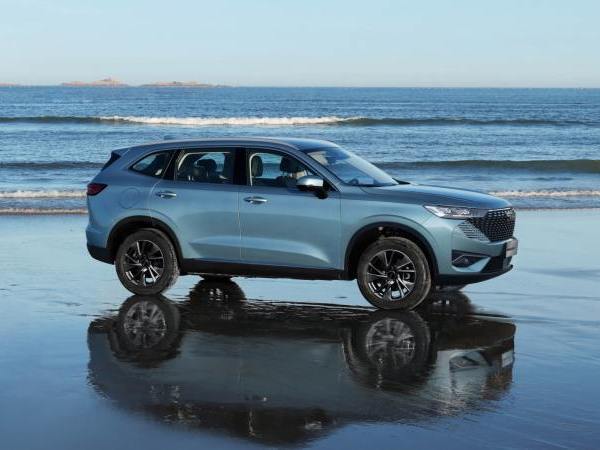
HAVAL H6 HEV Test Drive: A Budget-Friendly Alternative to CR-V e:HEV
WilliamJun 25, 2025
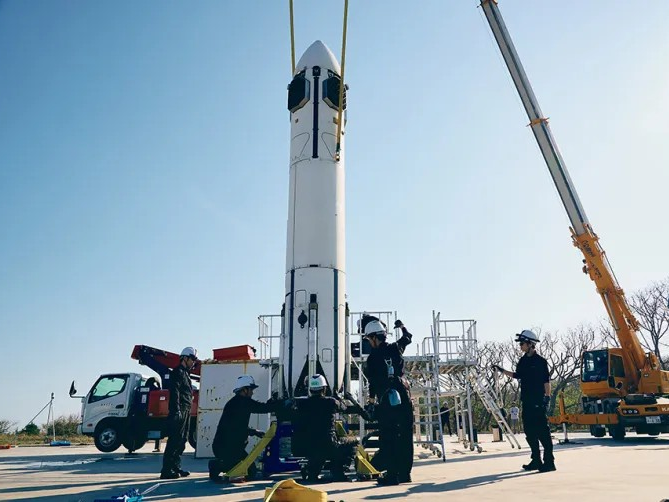
Success! Honda Type R Rocket Test Paves Way for 2029 Space Mission
Kevin WongJun 24, 2025
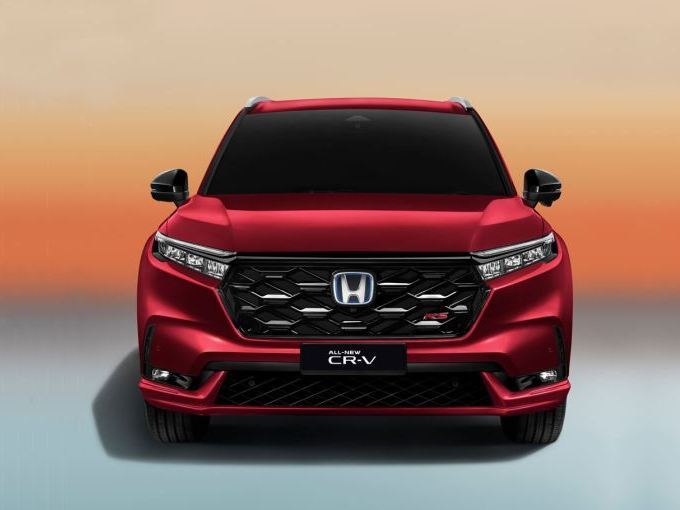
Honda CR-V: 1.5L Turbo or 2.0L Hybrid - Which One Is Right for You?
JamesJun 18, 2025
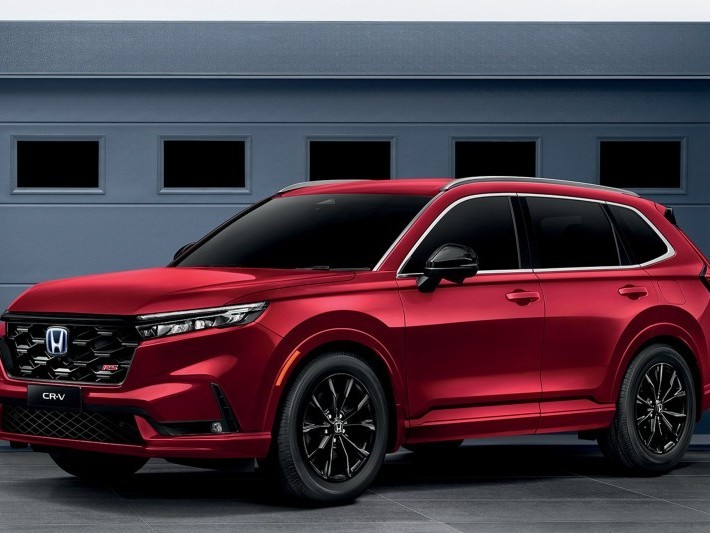
Smart Choice: Honda CR-V - Unbeatable Value, Worry-Free Driving
MichaelApr 11, 2025
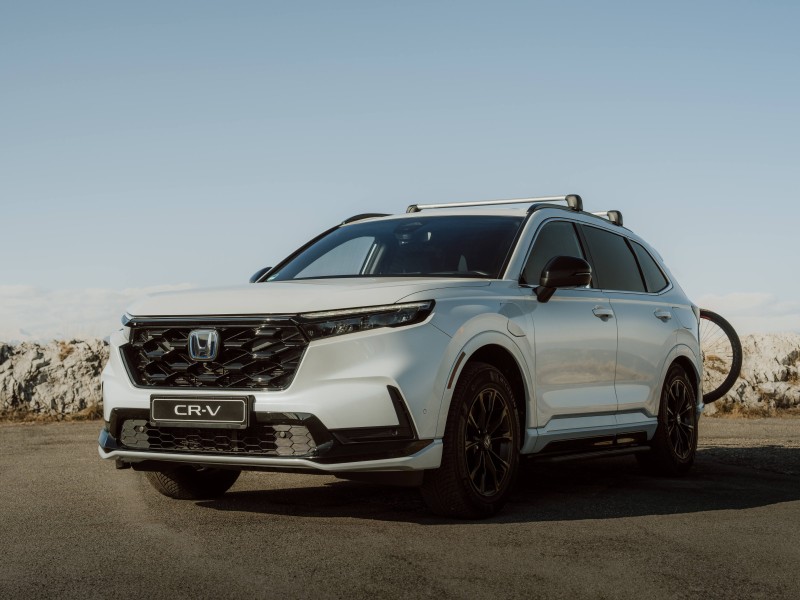
CR-V 30th Anniversary Edition Debuts in Europe: Camp-Ready Interior Takes Center Stage!
JamesApr 9, 2025
View More












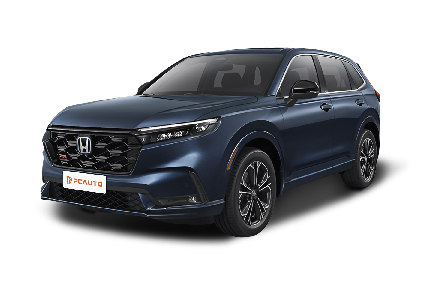
 Cars
Cars




Pros
Cons